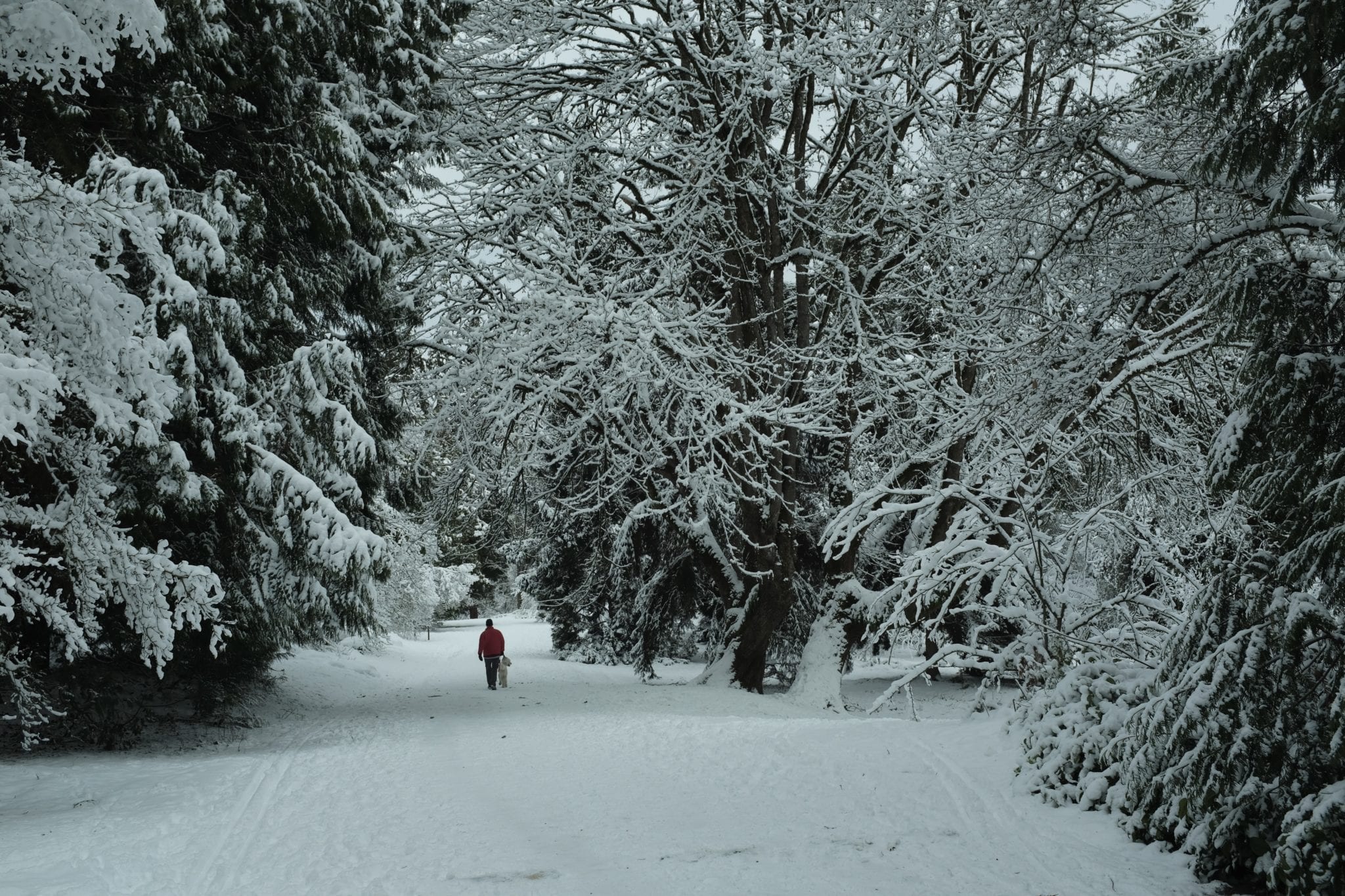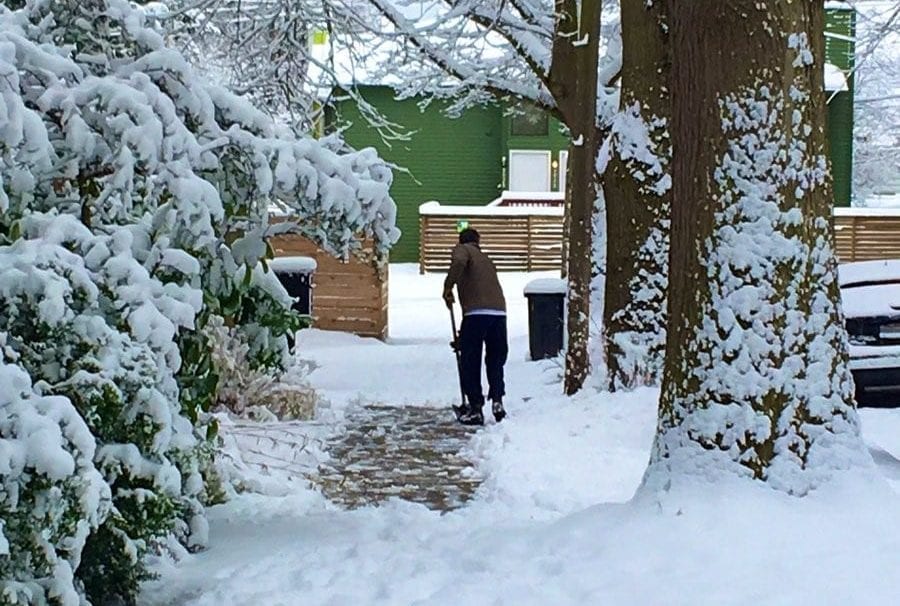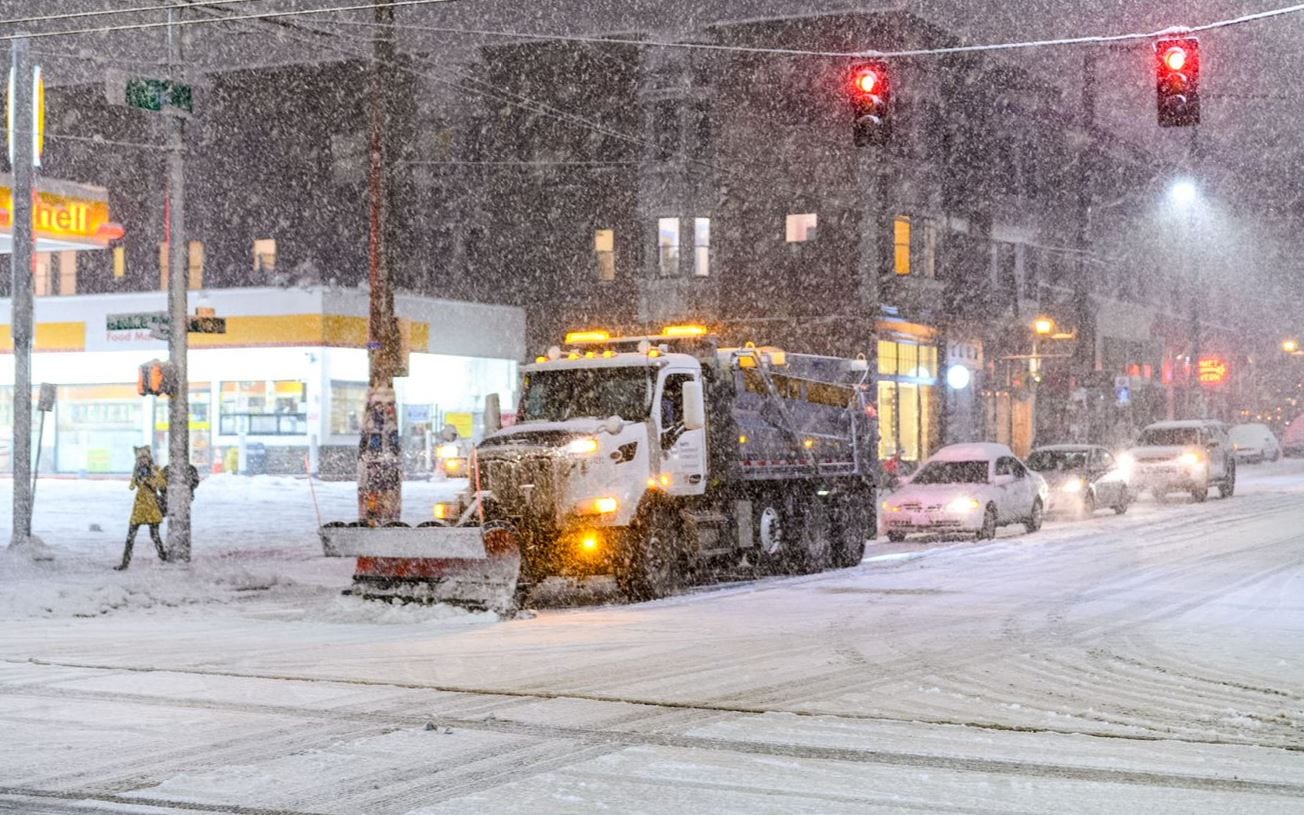
This morning Seattle woke up to a blanket of snow clinging to trees and rooftops.
Our crews hit the roads at noon Sunday to pre-treat the roads before the snow started accumulating. They worked throughout the night to clear roads of snow and ice. We’re happy to report that all city snow routes are treated and safe to drive on and that no streets were closed due to snow Monday morning. Our Snow routes include high-priority routes at schools and hospitals.
Today, crews are still on the roads to make sure there isn’t slush and standing water on roadways that could turn to ice when the temperatures drop. They’re also focusing on clearing walking and biking routes including overpasses, sidewalks, curb ramps, and protected bike lanes. Our street use inspectors are educating property owners about snow clearing responsibilities.
We can’t be everywhere at once. With over 2,400 miles of sidewalk in Seattle, we depend on the public to do your part and clear the sidewalks and curb ramps in front of your homes and businesses.
Clearing the sidewalks isn’t just the law, it’s also the right thing to do so that everyone can travel safely during a snow storm, especially people who have special needs that find it extra challenging to get around.
Here are things to keep in mind when shoveling your sidewalk:
- Snow should be cleared within 12 hours after snowfall ends, and as the snow melts and refreezes, you should keep an eye out for icy patches and other hazards that may form.
- Make sure that the cleared path is at least 36 inches wide so that people with mobility aids like wheelchairs can get around too.
- Make sure that the storm drains are clear of any snow and ice. If melted snow can’t drain, it can form puddles which can refreeze overnight.
- If you see a curb ramp that hasn’t been cleared yet, pitch in to help your community stay safe and moving.
Talk to your neighbors to find out who will need help in your community, work together to support one another, and come up with a plan to ensure that all the sidewalks on your block are kept clear so that everyone can get around safely.
No matter how good a driver you think you are, you just can’t be too careful around ice.
The roads may be fine now, but as the temperatures drop and precipitation continues, road conditions can change. Remember:
- Check which roads have been cleared of snow and ice.
- Carry food, water, blankets, and an emergency kit in your car.
- Remove all snow and ice from your car before hitting the roads – not just the windows, but the hood and top of your car also.
- Take your time & leave plenty of room to stop
- If you don’t feel in control, find a safe spot to pull over
- Obey street closed signs – they’re closed for your safety
Remember, if you don’t have to drive, leave your car at home.
Walk, bus, light rail, bike, or cozy up and stay put in your home.
More resources:
- Read our winter weather FAQs – all of the answers you’ve been waiting for on snow & ice response!
- Don’t miss our winter weather resources & related websites.
- Visit King County Metro’s Metro Winter webpage: prepare for bus routes in winter weather.
- Read our recent winter weather blog posts for more helpful info.


